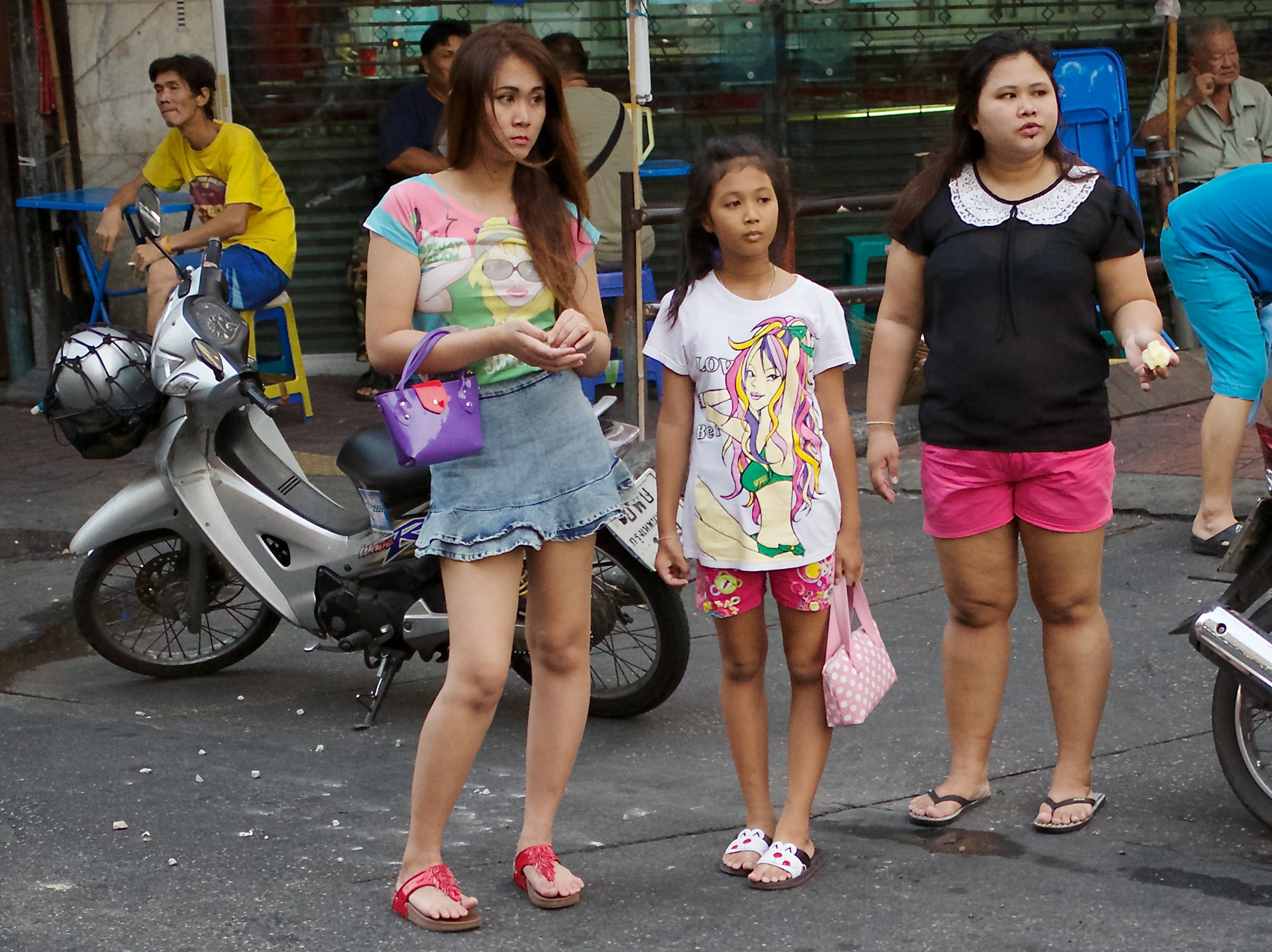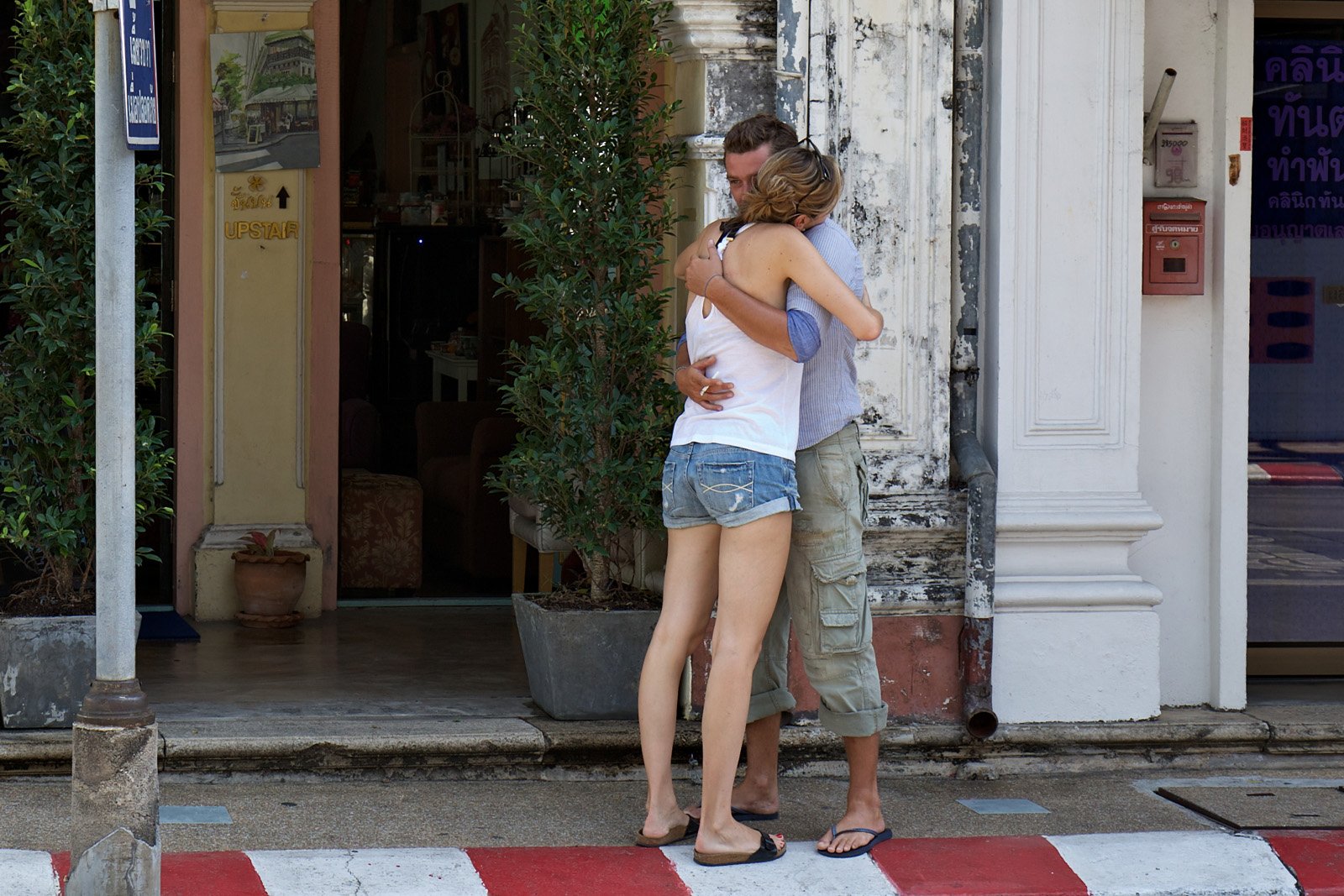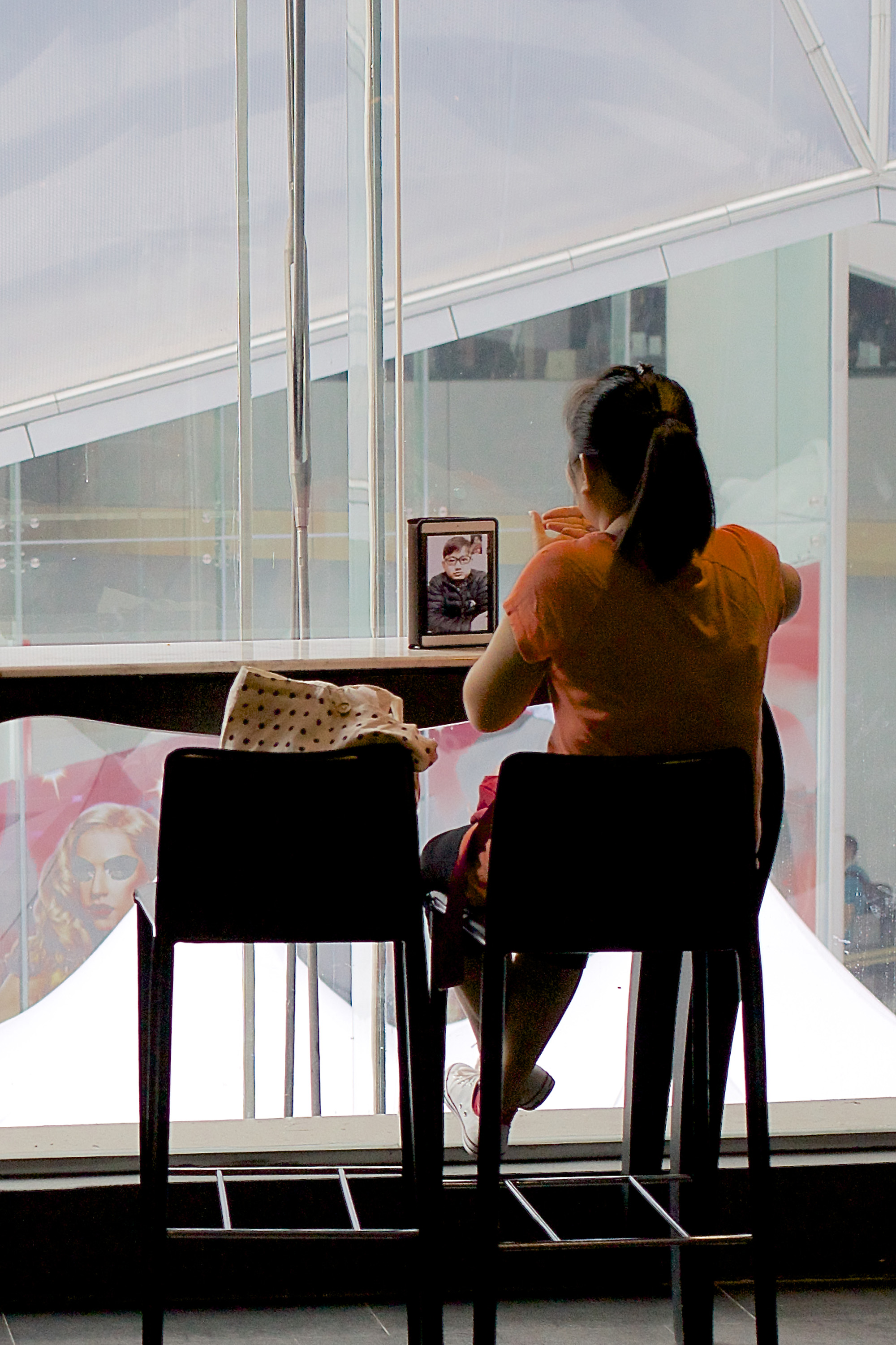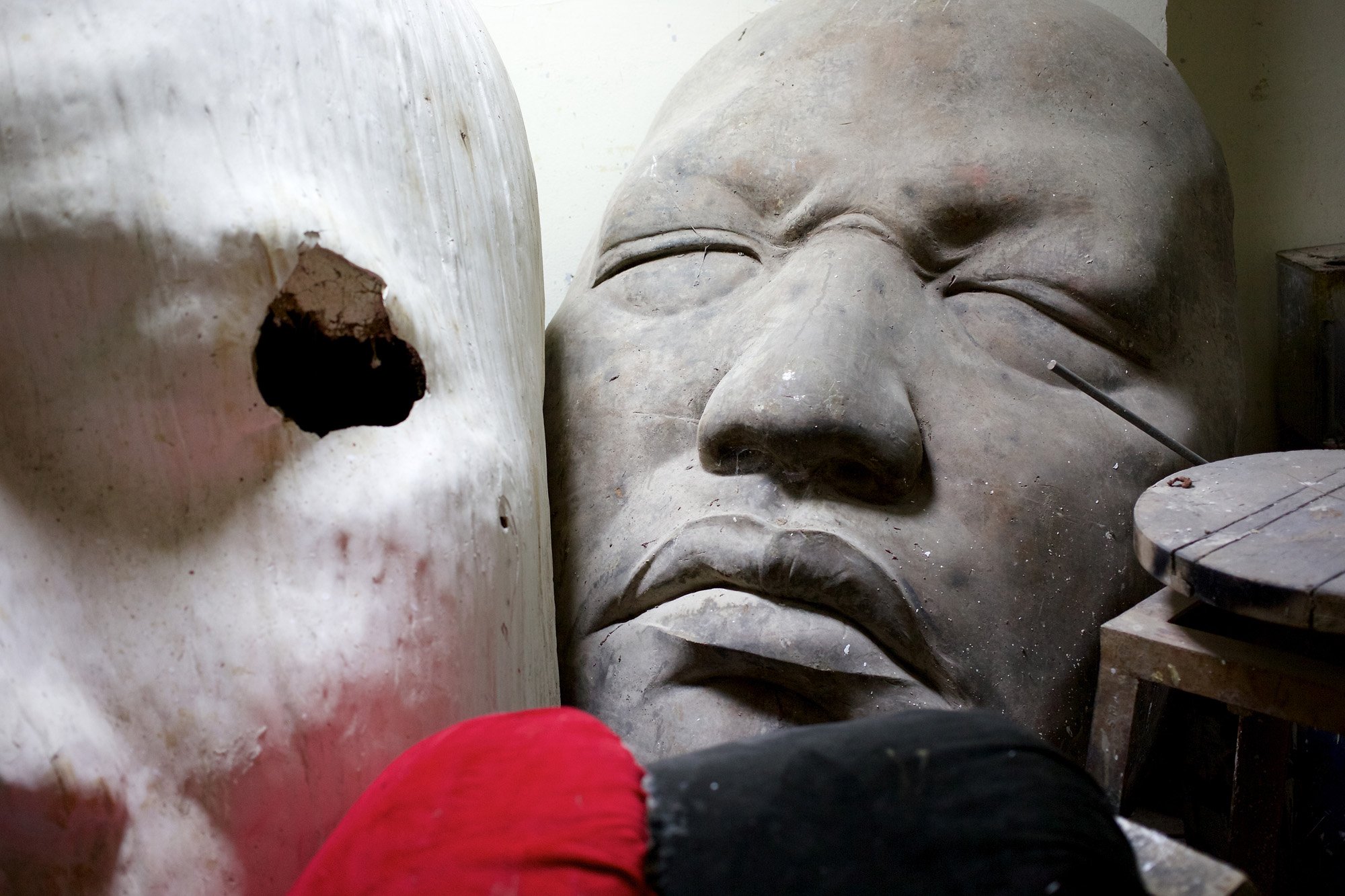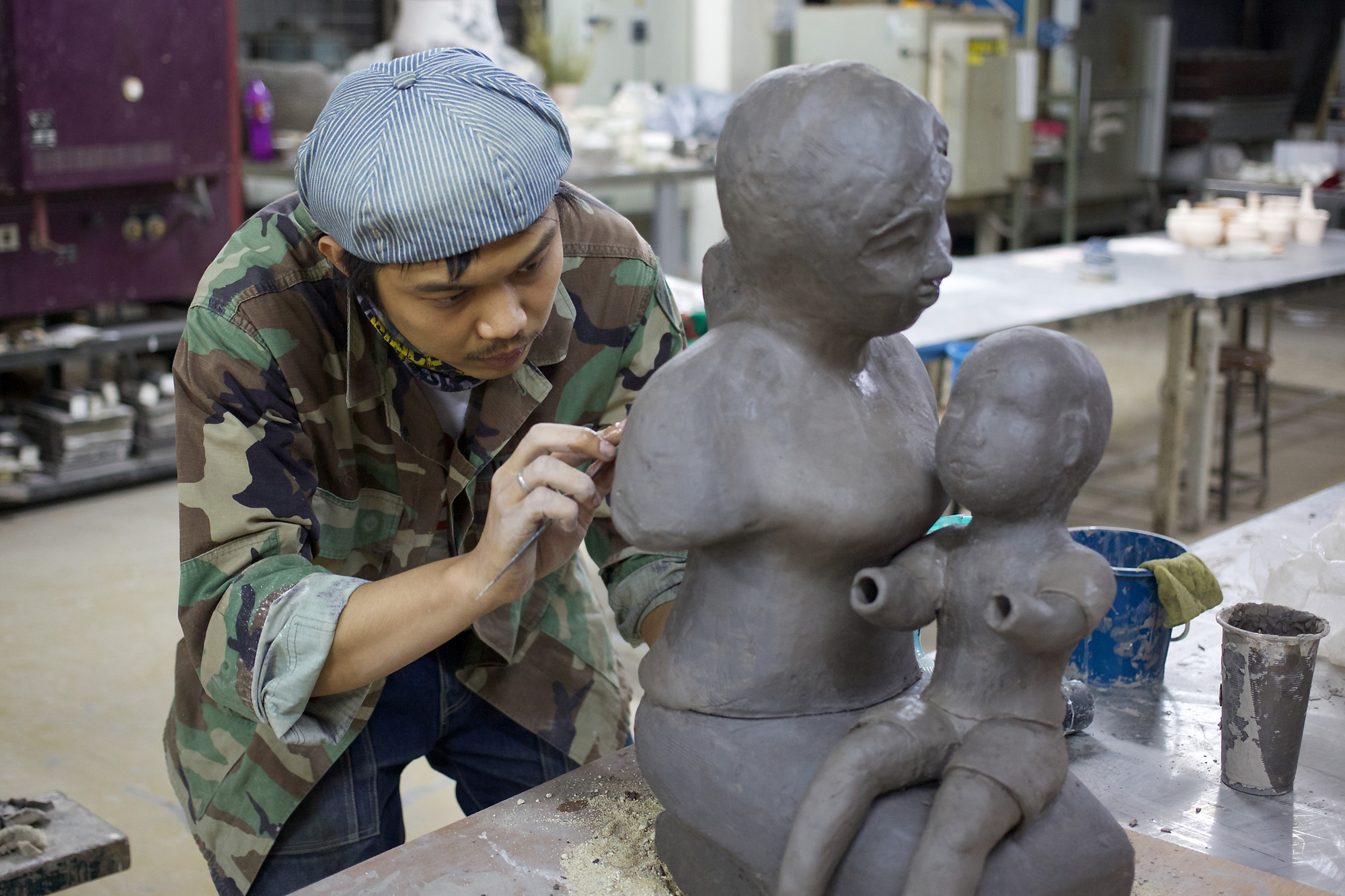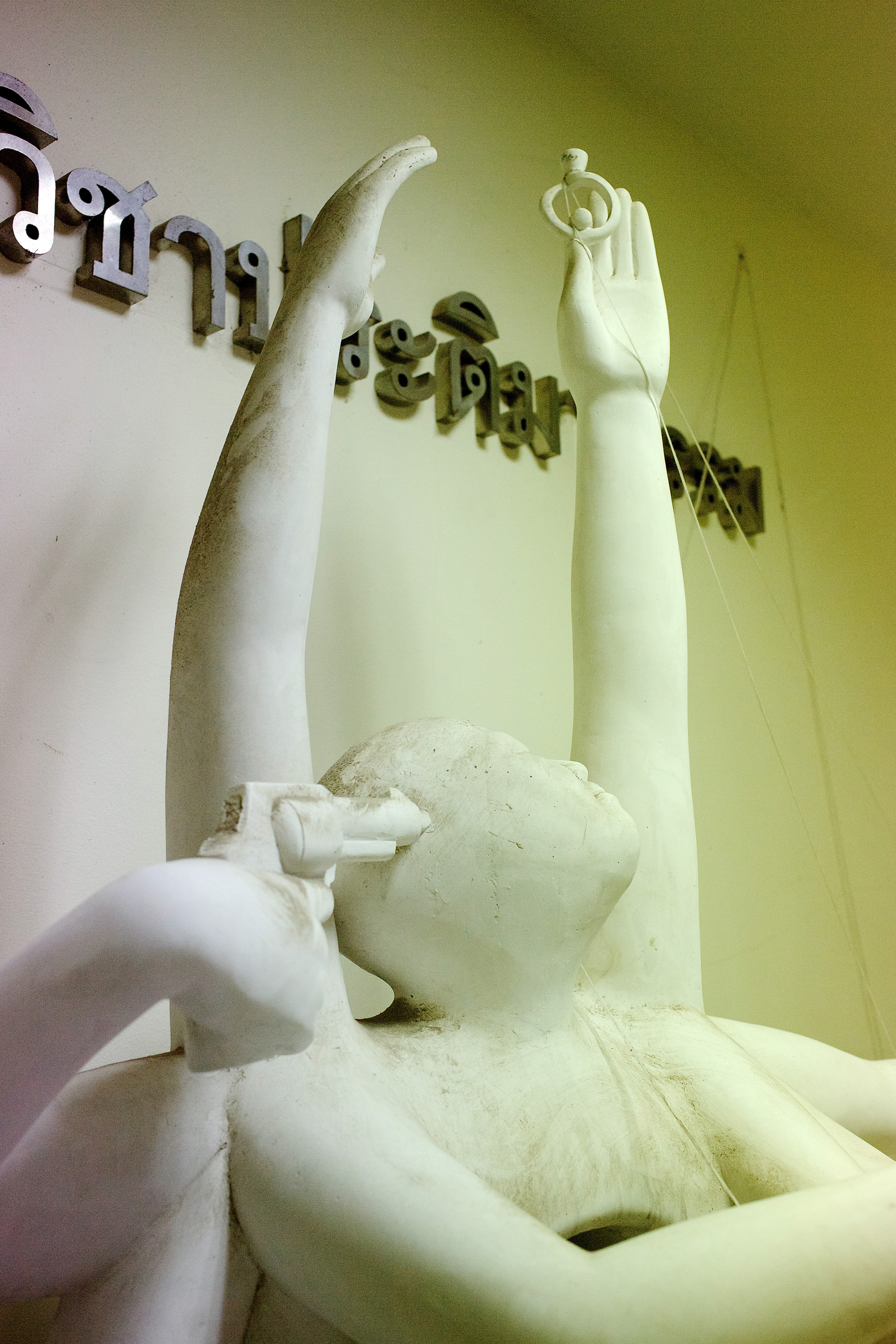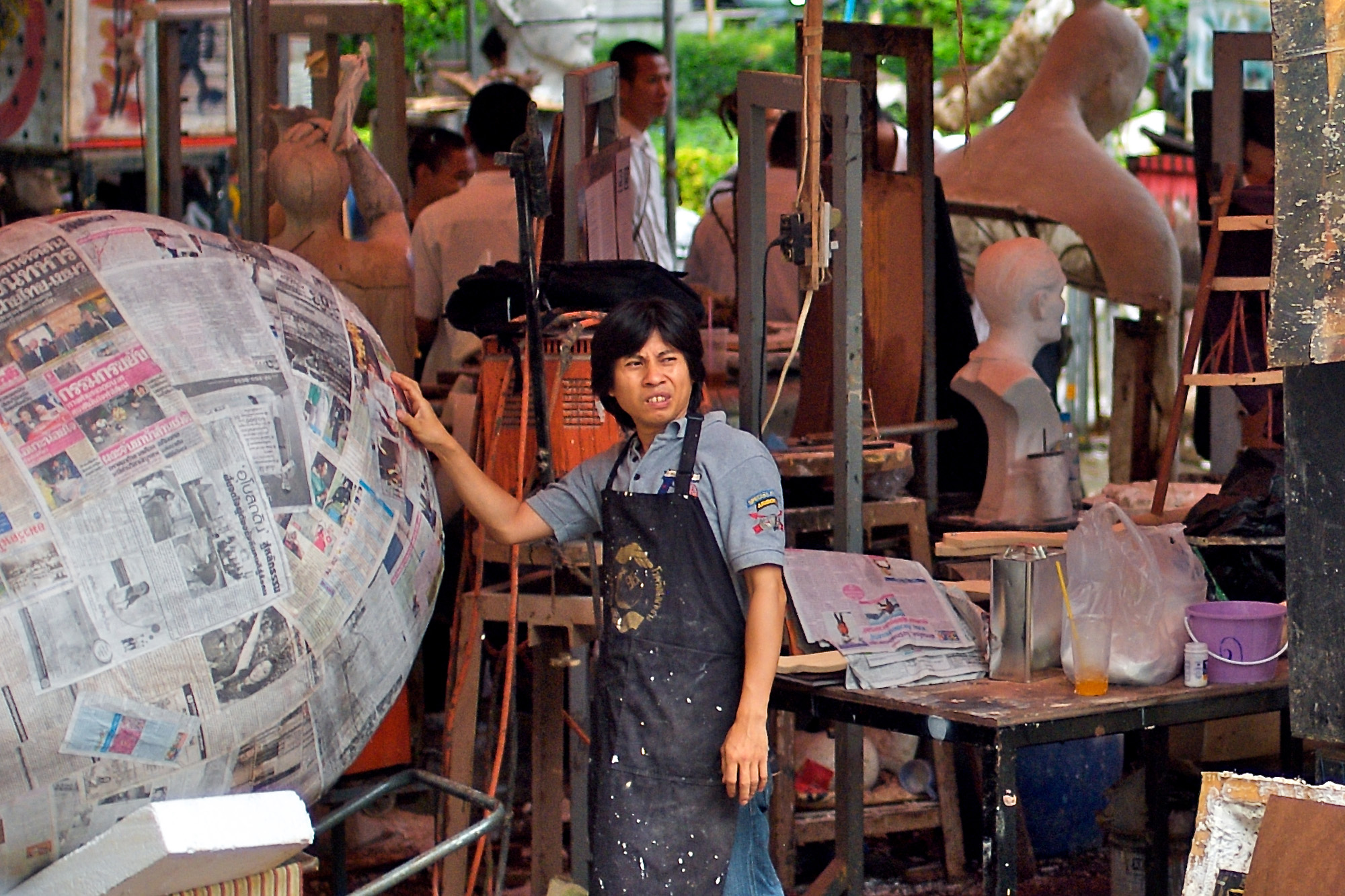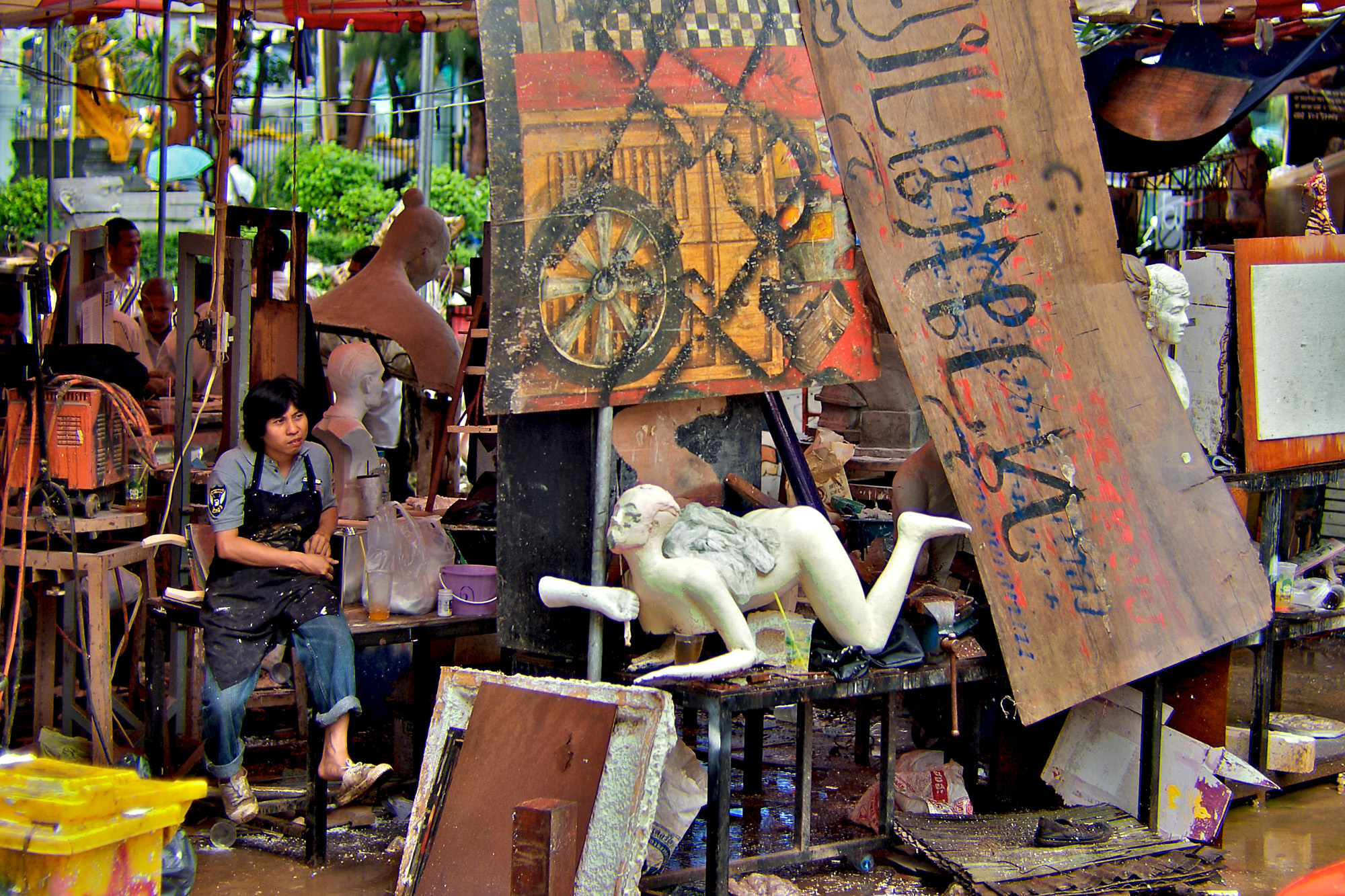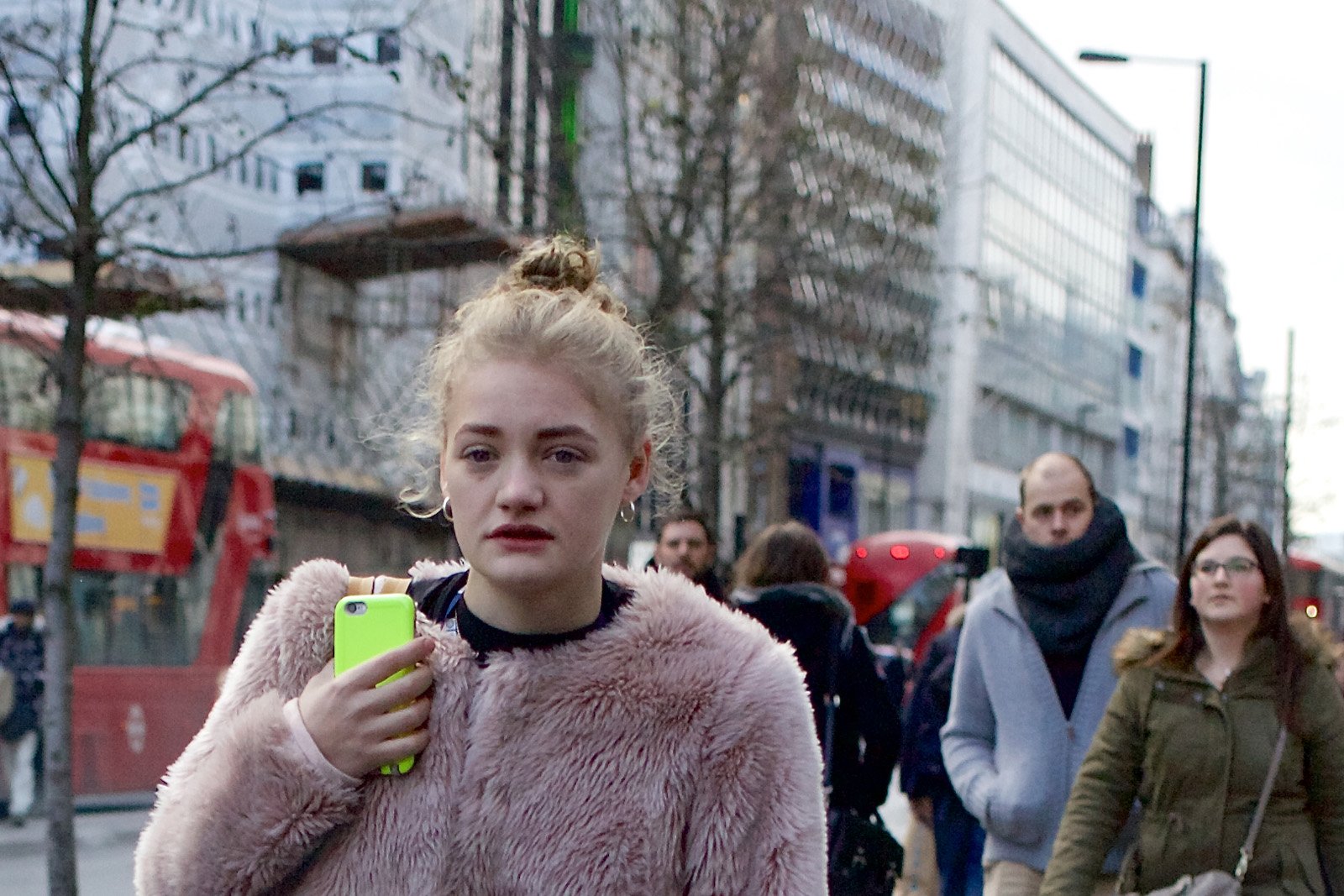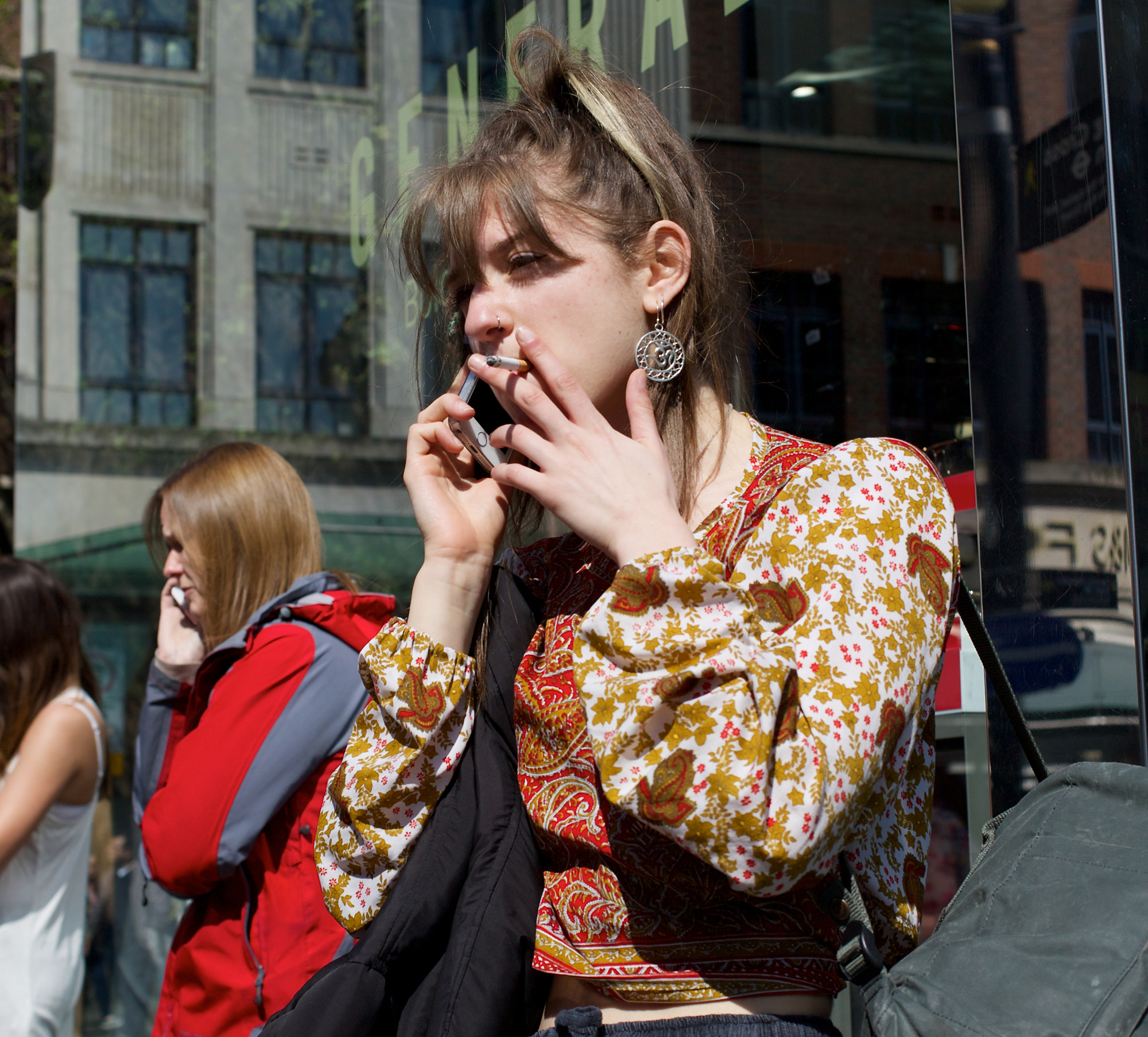There are plenty of things in the city that make life difficult for the street photographer: incessant traffic, fluorescent clothing, plastic bags — carried or discarded — to name but three. By contrast, tee-shirts are the photographer’s friend, especially the naughty ones.
If you see someone wearing an outrageously naughty tee-shirt you can be reasonably sure it’s OK to take a picture. The wearer is almost certainly an extrovert who struts around in provocative clothing in order to get noticed. It’s the extreme version of wearing fancy socks with a sober business suit, but thankfully more photogenic.
FCUK
However, only a very small percentage of people have the temerity to display themselves in tee-shirts with salacious content. Several years ago in the UK, clothing retailer French Connection noticed this phenomenon and solved it by coming up with the edgy logo: FCUK. People could now pretend to be at the forefront of outrageousness while hiding behind a perfectly legitimate corporate logo. If it looked like an offensive word, well, that was in the mind of the spectator not the wearer.
Thinking up interesting stuff to put on the front of tee-shirts is the occupation of thousands of creative people, many of whom have made their fortunes in this way. Yet the market for truly naughty tee-shirts is relatively small, given the fact that nearly everyone wants to be accepted by the vast majority of others. If your tee-shirt shouts an obscenity, you are — in a sense — swearing at everyone you meet.
He Loves It
My featured shot (above) is one of my favourite photos. The light is great in this Bangkok street market; there’s a happy smile from the stallholder in the background; and the wine coloured cardigan of the girl on the left goes well with the stripey tee-shirt on the right.
Ah yes, that one. You can’t avoid reading it. The arrow points to a non-existent companion (surely anyone would keep to the other side of her!). The spectator can only guess whether — like FCUK — the message is deliberately ambiguous. Maybe it comes from “down South” where cock fighting is a popular sport — and where the owners become quite attached to their ferocious birds, especially if they win.
When you’re in a country like Thailand, where English is not the main language, there’s always the possibility that the wearer doesn’t fully understand the ambiguities of the message. I don’t think that’s true in the above example, or in the one immediately below. When no words are involved, the message is pretty unambiguous — or just pretty.
I’m not sure if women find this man’s soft-porn tee-shirt intimidating. Many will think it offensive, but the wearer doesn’t appear to mind if it hampers his chances to attract the opposite sex. Perhaps he’s so confident of his good looks he merely wants to signal his availability. Whatever his motives, he seems to have spotted someone out of frame, and the gesture with his right hand suggests even more wishful thinking.
It’s Just Decoration
Sexual imagery can be stylised into cartoon form and worn with the complete confidence that it’s only a pattern — a cheerful, decorative motif which can be worn anywhere.
I love the three contrasting styles in the photo below. The image tells us more about human nature than do either of the two pictures above. Here, there’s no irony, no ambiguity. These people are practical and straightforward, yet scarcely keeping up with the pace of change in the city. Nonetheless, they have dreams of better things to come.
And so do we all.


